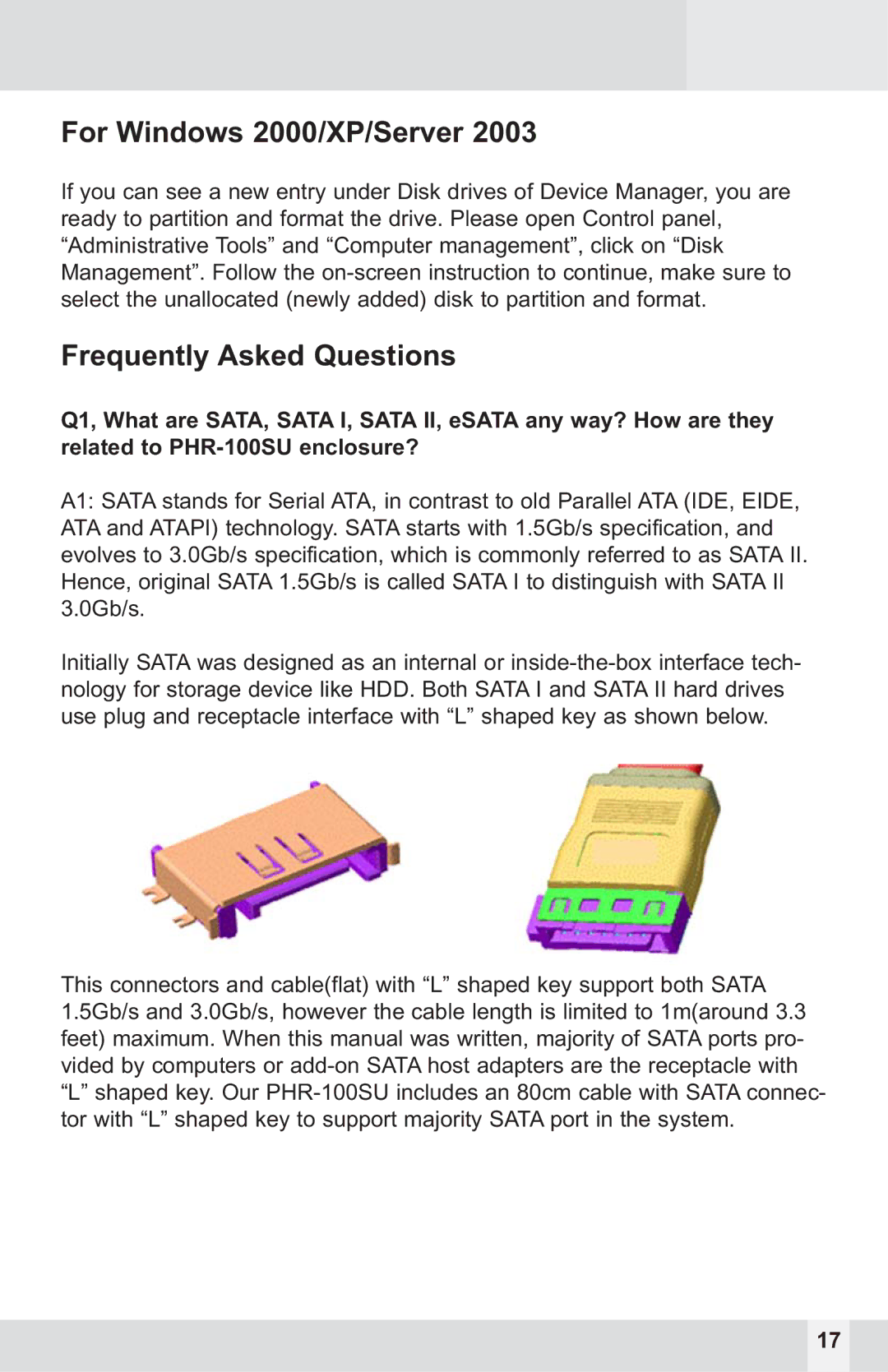
For Windows 2000/XP/Server 2003
If you can see a new entry under Disk drives of Device Manager, you are ready to partition and format the drive. Please open Control panel, “Administrative Tools” and “Computer management”, click on “Disk Management”. Follow the
Frequently Asked Questions
Q1, What are SATA, SATA I, SATA II, eSATA any way? How are they related to
A1: SATA stands for Serial ATA, in contrast to old Parallel ATA (IDE, EIDE, ATA and ATAPI) technology. SATA starts with 1.5Gb/s specification, and evolves to 3.0Gb/s specification, which is commonly referred to as SATA II. Hence, original SATA 1.5Gb/s is called SATA I to distinguish with SATA II 3.0Gb/s.
Initially SATA was designed as an internal or
This connectors and cable(flat) with “L” shaped key support both SATA 1.5Gb/s and 3.0Gb/s, however the cable length is limited to 1m(around 3.3 feet) maximum. When this manual was written, majority of SATA ports pro- vided by computers or
17
